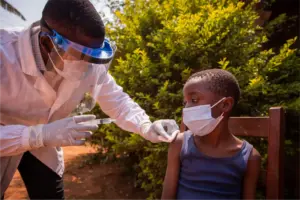
A new federal estimate has revealed a sharp rise in prediabetes among American adolescents, raising serious concerns about youth health and drawing criticism over how the findings were released.
According to the latest data from the U.S. Centers for Disease Control and Prevention (CDC), nearly 1 in 3 teens aged 12 to 17, around 8.4 million adolescents, had prediabetes in 2023. This is a significant jump from earlier estimates, which suggested the condition affected only about 1 in 5 children.
Prediabetes, marked by elevated blood sugar levels that fall just below the threshold for diabetes, increases the risk of developing Type 2 diabetes, heart disease, and stroke.
Also Read | Diabetes drug may ease migraines, even without weight loss
While the new figures reflect an alarming public health trend, experts have raised red flags about the CDC’s approach. The data was shared only via a 600-word online summary without peer-reviewed publication or access to raw data. Additionally, the CDC acknowledged using a new methodology to arrive at the higher figure but has yet to offer a full explanation of the changes.
“This is a critical wake-up call,” said CDC spokesperson Melissa Dibble, who defended the updated analysis as being based on “the latest science and technologies.”
However, public health experts are urging caution. “I’m going to be skeptical of data updates until there is transparency and clarity,” said Christopher Gardner, a diabetes researcher at Stanford University, referencing ongoing staff cuts and leadership changes under the Trump administration.
Steven Kahn, editor-in-chief of Diabetes Care, echoed concerns about the lack of published detail. “Because there’s no raw data to look at, none of us can better understand where these numbers are derived from,” he said.
The updated analysis drew from the National Health and Nutrition Examination Survey (NHANES), a long-running government project that collects medical data through interviews and lab testing. The CDC estimates that if the new methodology were applied to earlier data (2005–2016), the rate would have been about 28%, meaning the recent jump to 33% may not be statistically significant, though still concerning.
While some prediabetic teens may return to normal glucose levels as they mature, experts warn that many others will not, and the US healthcare system may be unprepared for a surge in early-onset diabetes. The American Diabetes Association recommends screening at age 10 for children who are overweight or have other risk factors.








